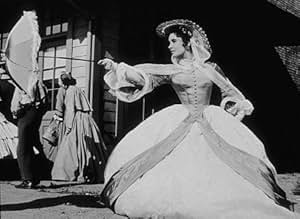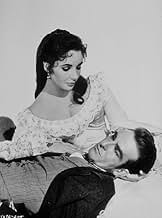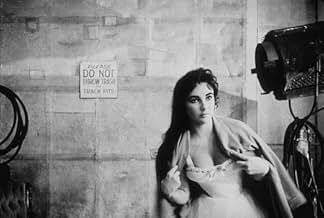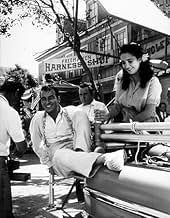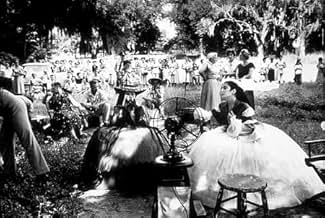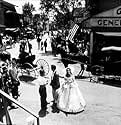VALUTAZIONE IMDb
6,3/10
4525
LA TUA VALUTAZIONE
Uno studente si innamora di una bella del sud, ma la loro relazione è complicata dal passato travagliato della ragazza.Uno studente si innamora di una bella del sud, ma la loro relazione è complicata dal passato travagliato della ragazza.Uno studente si innamora di una bella del sud, ma la loro relazione è complicata dal passato travagliato della ragazza.
- Candidato a 4 Oscar
- 1 vittoria e 8 candidature totali
Fred Aldrich
- Townsman
- (non citato nei titoli originali)
Ruth Attaway
- Parthenia
- (non citato nei titoli originali)
John Barton
- Townsman
- (non citato nei titoli originali)
Oliver Blake
- Jake - Bartender
- (non citato nei titoli originali)
Nesdon Booth
- Spectator
- (non citato nei titoli originali)
Trama
Lo sapevi?
- QuizThe scenes which Montgomery Clift shot for this movie just before his accident represent the only color footage available of him before he was disfigured. All of his previous movies had been shot in black-and-white.
- BlooperAfter Abraham Lincoln's 1860 election, the crowd sings "The Battle Hymn of the Republic". However, Julia Ward Howe wrote the poem on which the song was based for the Atlantic Monthly in 1861.
- Citazioni
Susanna Drake: That 4th of July race... what happens when you win?
John Wickliff Shawnessy: Well, according to a friend of mine, if I win, a beautiful girl will place a garland of oak leaves on my sun-colored locks.
Susanna Drake: I'd like to be that girl.
John Wickliff Shawnessy: Maybe it can be arranged?
Susanna Drake: Oh, it can be arranged, all right. *I'll* arrange it.
- Versioni alternativeThe longer Roadshow version was released on VHS by Warner, where it was labeled as Reconstructed Original Version. It has also been shown on Turner Classic Movies cable channel. This version contains nearly 15 minutes of additional material not found on the General Release Version.
- ConnessioniEdited from Via col vento (1939)
- Colonne sonoreRaintree County
Music by Johnny Green (uncredited)
Lyrics by Paul Francis Webster
Sung by Nat 'King' Cole
Recensione in evidenza
I discovered Ross Lockridge Jr.'s attempt at the Great American Novel when I first saw "Raintree County" the film in 1957. I was aware that the story that was put on the screen was not perfect, although it is a beautifully-made and often-interesting film; so I read the novel, to discover what had been omitted. Because I have become an expert on both the book and the film, I appreciate even more what is right about cinematic achievement and find myself more willing to ignore the story's flaws. First, consider the direction, a near-miracle of taste, shot composition, blocking and work with actors achieved by Edward Dmytryk. Art direction, lighting, set design, Walter Plunkett's costumes, the low-key music by Johnny Greene, the theme song, the dialogue by Millard Kaufman, and some of the acting rate with Hollywood's finest. In particular, Eva Marie Saint's work as Nell Gaither, Nigel Patrick as Professor Stiles, Walter Abel as T.D. and Lee Marvin as Flash Perkins deserved Oscar nominations. The smaller parts in the film, from James Griffiths to De Forest Kelley to Tom Drake are all well-nigh flawless. And the memorable scenes such as the Southern ball, the visit to a bordello, the great July Fourth race, Johnny's misadventure in the swamp, the scenes on the Academy lawn, the handling of Johnny Shawnessey's house in Freehaven, Indiana, the war scenes, the great rally in 1860, Rod Taylor's office as Garwood Jones in Indianapolis, all are very well mounted. The flaw in the script, which has a story much-altered from the novel that has one philosophical error also (the author cannot accept American individualism as being not social but reality-based) was confirmed for me by Eva Marie Saint. In 1966, I complimented her acting then asked if the story might not have been handled more strongly, to reflect the novel. Sadly, she noted, "Oh no--they GAVE the picture to ELIZABETH!". A multi-million-dollar film had been made to wangle an undeserved nomination for an Academy Award for Elizabeth Taylor, who tries hard but lacks the classical dimension. But, there is a way to enjoy this superbly-made film that renders the problem of Johnny Shawnessey's obsession with the Taylor character smaller: watch it in 'thirds'. The film then becomes Young John Shawnessey; Johnny and Susannah Drake; Aftermath. It was shown this way on a Los Angeles TV station once, and the structure became much more evident. As the central character, Montgomery Clift starts well but the accident he had during the film and his miscasting vitiate some later work; he gets by with most of his very-demanding role, however, and his work in the last third of the film has some real power. I would not have missed this film for anything; it has been part of my life for fifty years; why not make its power, haunting successful scenes and many lovely attainments a part of yours also.
- silverscreen888
- 15 giu 2005
- Permalink
I più visti
Accedi per valutare e creare un elenco di titoli salvati per ottenere consigli personalizzati
Dettagli
Botteghino
- Budget
- 5.000.000 USD (previsto)
- Tempo di esecuzione3 ore 2 minuti
- Colore
Contribuisci a questa pagina
Suggerisci una modifica o aggiungi i contenuti mancanti

Divario superiore
What is the Brazilian Portuguese language plot outline for L'albero della vita (1957)?
Rispondi

